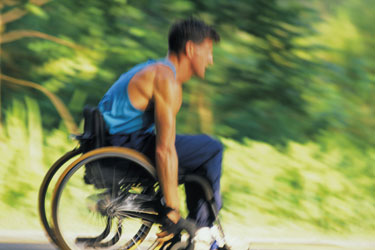
When you’re sitting all day in a wheelchair, staying active is essential. It doesn’t matter if the situation is temporary or long-term. Exercise can’t be an afterthought, and all of your muscles need to be worked so your body can function properly. If too much weight is gained or upper body strength is lost, wheelchair-bound individuals have even less mobility.
If you’re looking for ways to stay fit in a wheelchair use the advice below to put together a fitness plan.
Always Put Safety First
Exercising and staying active is important for your health, but you should never jeopardize your safety. Anyone can push themselves too hard too quickly and end up sustaining an injury.
As you gain strength, mobility and flexibility it’s important to continue using medical devices and supportive equipment. For some people, these aides significantly help recovery. Equipment like EasyClimber residential elevators doesn’t just provide upstairs access. They reduce the risk of a fall and unnecessary strain.
The goal is to improve your health and fitness. If you ignore doctor recommendations and fail to take proper safety measures you may end up doing the opposite.
Set Health Goals and Share Them
Setting goals helps keep us motivated and focused. Unfortunately, many goals are unmet because there’s no follow through.
Setting health goals that last and become healthy habits starts with accountability. When you share your health goals with a trainer, family member or friend it increases your odds of reaching them. You’ll automatically feel more obligated to reach a goal when someone else knows and can hold you accountable. Surround yourself with supportive people that also make fitness a priority and you’ll be setting yourself up for success.
It’s also important to start small with your goals and track progress. Once you reach your goal continue building on your success little by little.
Find a Wheelchair-Friendly Sport
Some sports are a more natural fit for people in a wheelchair, and they’re fun ways to get exercise. Take golf for example. It can be played whether you are sitting or standing and most courses are completely accessible by wheelchair.
Other sports, like basketball, have been modified to accommodate people in wheelchairs. Check with your city’s parks and recreation department or local sports leagues to find out if there are teams or events for people who play in a wheelchair. The Challenged Athletes Foundation is another useful resource for anyone that wants to get involved in group sports activities.
Set Up an At-Home Gym
Some people don’t have the time to make it to the gym regularly while others prefer to workout at home. Either way, if you make a few investments you can have everything you need to work out in the comfort of your house. Plus, you’ll have no excuses not to make fitness a part of your normal daily routine.
Resistance bands are a great workout equipment. They are lightweight and extremely portable, but resistance bands still make you work the muscles. Another benefit of using bands is they can be anchored to points on your wheelchair for a wide variety of exercises. You can use resistance bands to perform many of the upper body exercises that normally require dumbbells.
A yoga mat is another piece of exercise equipment that you may find useful. There are a number of core exercises and stretches that can be performed while sitting or lying on the ground. Yoga mats provide a cushioned, anti-slip surface that makes floor exercises safer to perform.
A medicine ball can also be used to improve core and upper body strength. Start with a medicine ball that’s only around five pounds and work your way up to a heavier weight.
Find Paved Trails to “Hike”
Being out in nature is beneficial for the mind and body. You may not be getting the same amount of exercise as someone who’s walking, but the health benefits are undeniable. For example, time outdoors can make it easier to get a good night’s sleep, which is when the body repairs and recovers.
These days most cities have at least one wheelchair accessible trail in public parks. Some unpaved trails are also accessible depending on the wheelchair you own.
Being in a wheelchair doesn’t mean you have to give up all hope of being fit. In actuality, fitness is even more important for your quality of life.
